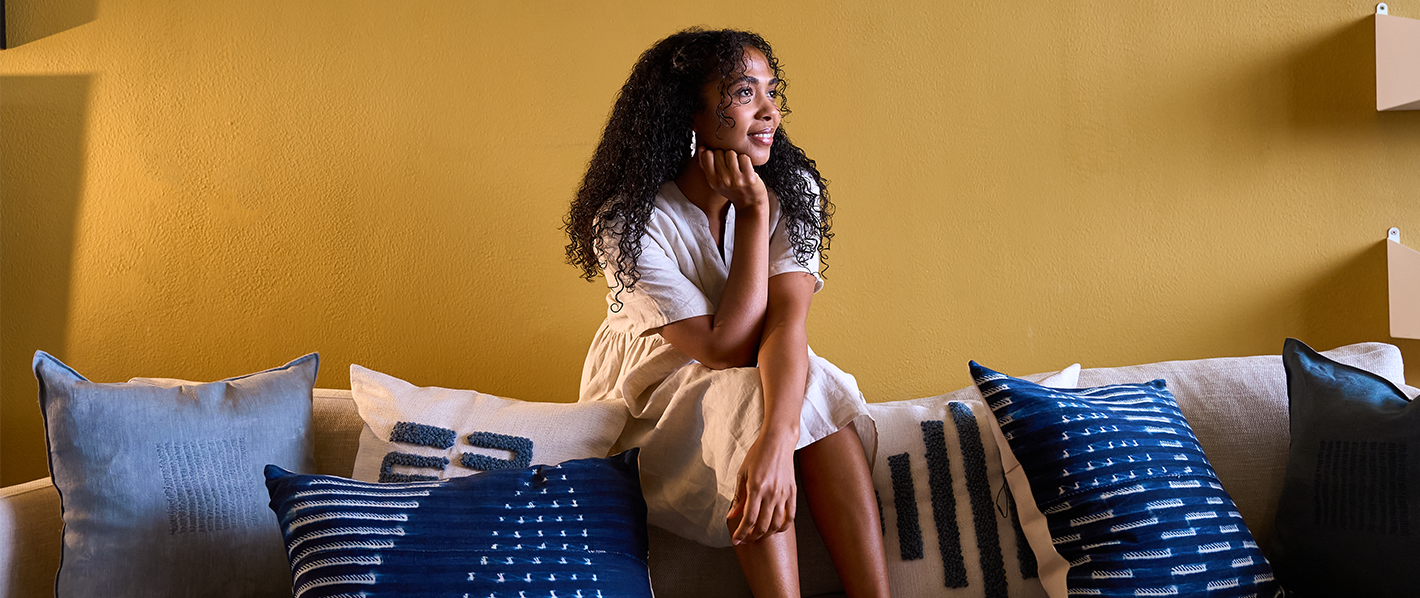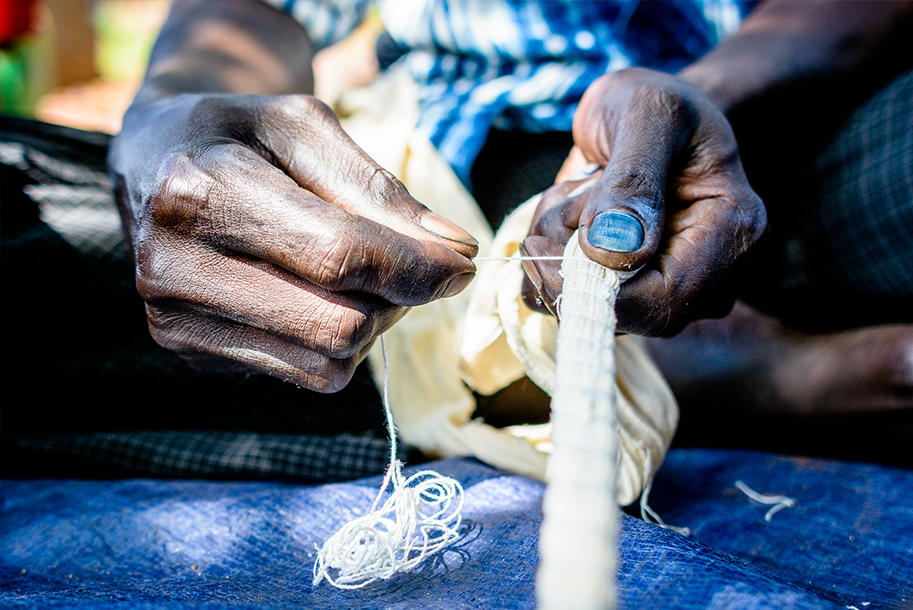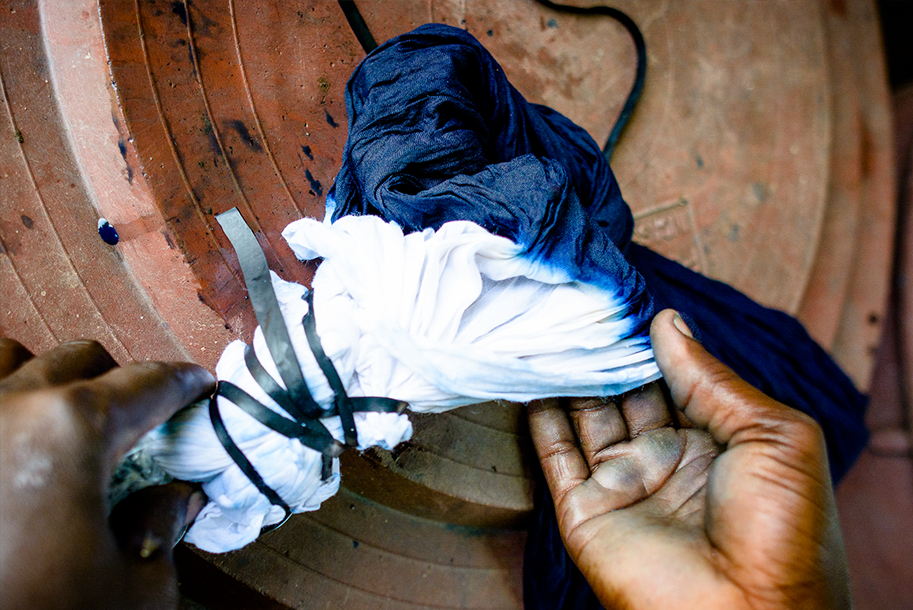Craftsmanship
Indigo Moments

Who doesn’t love indigo blue? Considering it has been made for thousands of years across the globe we can happily say many of us!
In West Africa, from the Sahara to Cameroon, indigo cloth has been worn as a sign of wealth and abundance. Today it is used more as a fabric much-loved for interior decoration.

HOW IT IS MADE
Dye is obtained from the processing of the leaves from the small Indigofera tinctoria bush.
The fresh leaves are fermented in water over a few weeks, then after the leaves are removed the liquid is mixed in with a strong base such as lye and left in a pit or tank ready to take the cloth.


Patterns are created on natural white cotton by various techniques and anyone familiar with tie-dyeing would know that folding, tying or dying are ways to stop the dye colouring the cloth but also in West Africa stitching and wax resist are also employed, depending on the required design.


The cloth does not stay in the dye bath for long and on dipping into the dye it initially goes a verdant green but in front of your eyes that colour disappears and transforms to the darker blue.

Some of these images were captured by one of our team in a past trip to Mali where much modern indigo is now made. The highlight was watching the process and visiting the dyer in his workshop that was bedecked with magnificent indigo cloths.


INDIGO AT AAFRICAA
Like a pair of good denim jeans indigo fabric can work well with many other fabrics and will fit in to many interior schemes. Our indigo cushions, sourced from Mali and Ghana work beautifully with our other hand dyed and textured cushions. Always great on a neutral coloured sofa or bed. Great for a coastal style home or a urban arty home or it can also look on black can look very rich and sumptuous.